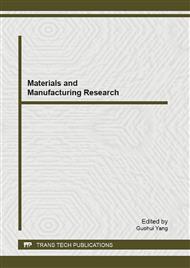p.227
p.232
p.237
p.242
p.247
p.255
p.259
p.266
p.271
Twinning Stress in Fcc Metals from the Classical Nucleation Theory
Abstract:
Deformation twinning is widely observed in face-centered cubic (fcc) metals. The stress for activating twinning is an important issue to be solved. We presented an expression linking to twinning stress based on the total energy change associated with the formation of a twinning nucleus according to the classical nucleation theory. We assume there exist no energy fluctuations to overcome the nucleation barrier. The expression can predict the twinning stress for fcc metals, which is in excellent agreement with experimental results with simple form. Finally, we introduce a measure twinability to quantify the propensity of fcc metals to twin as opposed to cross-slip.
Info:
Periodical:
Pages:
247-251
Citation:
Online since:
January 2013
Authors:
Keywords:
Price:
Сopyright:
© 2013 Trans Tech Publications Ltd. All Rights Reserved
Share:
Citation:


